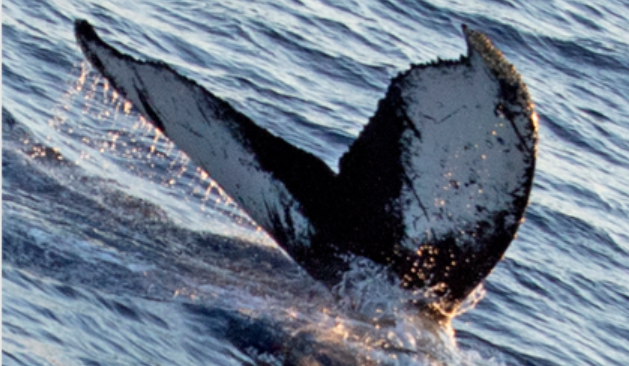We have an exciting new sighting of a Panama whale to report!
Panacetacea shares all of our humpback whale photo identifications with Happywhale, an online citizen scientist platform that collects photos from both scientists and the general public (happywhale.com/home). Happywhale uses state-of-the-art image processing algorithms to compare our photo identifications with other collections. This way we can know which whales have been seen in multiple areas.
Happywhale has tracked 137 whales seen off Panama between 2002-2019 to other regions. Most sightings have been expected to us, given what we already know about their migratory movements: nearby breeding areas like Ecuador and Colombia or to feeding areas off the Antarctic Peninsula and Chile. But once in a while an exciting sighting occurs. On January 22, 2020 the tourist ship Ortelius, with Oceanwide Expeditions, photographed a humpback whale in the Amundsen Sea, and Happywhale discovered we had seen this same whale in Panama! (https://happywhale.com/individual/35501;enc=104734). This whale was photographed in September 2012 in the Gulf of Chiriqui amongst a competitive group, a rambunctious group of males vying to mate with a female.

The Amundsen Sea is one of the several seas that surround Antarctica and that together make up the Southern Ocean. The straight-line great circle distance between these two sightings is 9200 km. Panama whales are already known for making extreme annual long distance migrations to the Antarctic Peninsula (8300km), but the Amundsen Sea is approximately 2600 km to the west of the Peninsula.
The Amundsen Sea is not visited very often by humans. In fact, this is the only humpback whale photo from this area in the Happywhale collection! With so little data it’s hard to know if this was one wayward whale exploring, or if this may represent an additional feeding area for humpback whales in Antarctic waters. Climate change has caused sea ice to retreat in Antarctica, which has both increased the area available for foraging while decreasing the habitat for krill larvae, the main prey for humpback whales in Antarctica. How these interactions change the distribution and population size of humpback whales is something scientists are paying close attention to. We are excited to have another piece of the puzzle to consider.
At a time when travel for humans is largely at a standstill worldwide, it is nice to think about these whales continuing to make their annual migrations throughout the world’s oceans.
Panacetacea thanks the Islas Secas Foundation for their continued support of this research.




